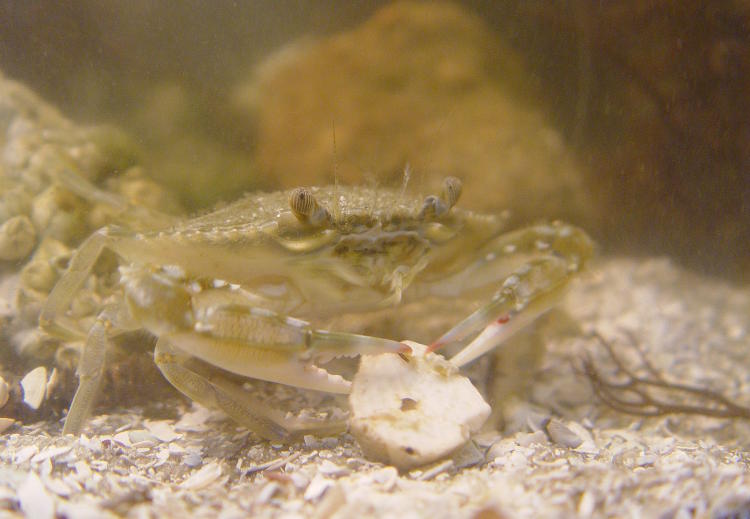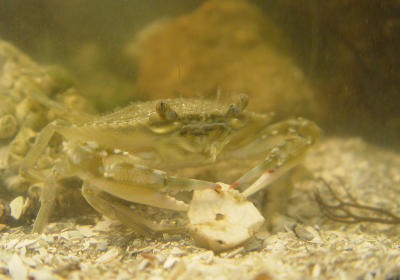Herewith I begin another semi-regular topic, though I haven’t yet decided if I’m going to aim for weekly or not. But for each of these, I will be featuring one of my earlier digital images, thus the ‘ancient lore’ bit – we’ll be stirring deep into history here, going as far back as 2004! That was actually before I’d purchased a digital camera of my own, but Jim Kramer (an obscure name, I know) had gone into digital before I, and when he’d upgraded to a later model, he loaned me his old one before it sold off to another friend of mine. This was when I lived in Florida, and I made the most of the time that I had it.
A word about the history. Digital cameras had been available since the mid 90s, though the first offerings were massive models and quite expensive, like 10 grand or better. By the time I was in Florida, Canon had a couple of DSLR models out, but mostly only the high-end professionals had adopted them – one wedding photographer that I knew had jumped in with a Canon 10D, though everyone else was still shooting film. The camera that I was using, a Sony DSC F717, was known by titles such as “prosumer” and “bridge” – a little better than the touristy point-and-shoot styles and possessing solid image quality, but still with a fixed zoom lens and not aimed towards the professional markets. Like most digital cameras of that time and years afterward, there was a noticeable delay between pressing the shutter button and actually capturing the image, and so crucial timing was difficult – as I would later gain a lot of experience in.
But right now, let’s go back to the second or third day that I had the camera, when I was maintaining a saltwater aquarium with residents of the local lagoon. There is actually a structure to my choices here, since I’m going in category order, followed by chronological – this comes from my ‘Aquatic’ folder.

Keep in mind, the webbernets wasn’t what it is now; there were a lot fewer resources available even though it had been active for close to two decades at that point, so it took a bit of time to identify this particular specimen – photo galleries of crab species really didn’t exist. And this was a much smaller example than what I was used to; measuring only about 5cm across the width of the carapace, this was a juvenile Atlantic blue crab (Callinectes sapidus,) lacking the deeper green coloring, with blue highlights, of the adults. It didn’t stay in my small aquarium for very long, since it required more food than would be available and it likely would have consumed many of the other species that I had in there, but I shot a few sessions while I had it. The shell fragment it seems to be displaying to us is actually a detached barnacle seen from the underside (which is the top of the head – no I’m not kidding.)
 This was before I got into serious macro work, and so my light sources were a bit eclectic. While I had two flash units at hand, a lot of my aquarium photography was done under the main light source for the tank, which was a halogen reading lamp on a swing arm. This prevented any bright reflections that a flash unit might have thrown from the glass of the tank, and provided a reasonably normal angle of light, but it was much dimmer than a strobe. And not white-balanced, so it cast an overall color shift that was worsened by the sediment in the water. The image to the left is the original, uncorrected color, while I tweaked the one above to be more of a neutral, ‘true’ white.
This was before I got into serious macro work, and so my light sources were a bit eclectic. While I had two flash units at hand, a lot of my aquarium photography was done under the main light source for the tank, which was a halogen reading lamp on a swing arm. This prevented any bright reflections that a flash unit might have thrown from the glass of the tank, and provided a reasonably normal angle of light, but it was much dimmer than a strobe. And not white-balanced, so it cast an overall color shift that was worsened by the sediment in the water. The image to the left is the original, uncorrected color, while I tweaked the one above to be more of a neutral, ‘true’ white.
The camera that I used here stopped working a few years ago, and the friend that had purchased it suggested that I take it back home if I wanted to fiddle with it and perhaps get it working again, but I forgot to put it in my bags when I left his place. Meanwhile, I think Jim still has the Sony F828 that replaced it – I’ll try pestering him to break it out, charge the batteries (if they’ll take a charge) and do some images for nostalgia’s sake.




















































